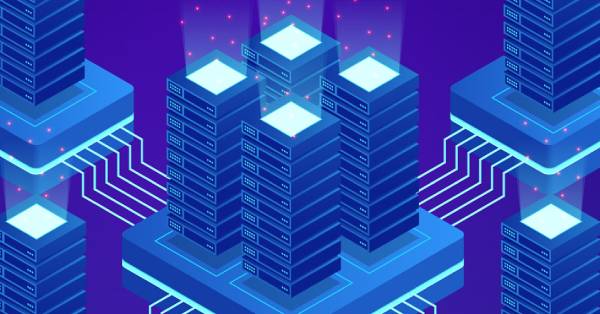Insights
How to Utilize Power BI Dashboards in Higher Education
October 14, 2021
A survey performed by Statista revealed that data creation will be over 180 zettabytes by 2025. That will be about 118.8 zettabytes more than in 2020. Data, in any corporation, especially Microsoft, Facebook, Amazon, Netflix, or Google (FANG), all heavily rely on collecting, analyzing, and utilizing data to make comprehensive business decisions. Google remains the highest shareholder in the search engine market, as they receive over 1.2 trillion searches yearly and more than 40,000 search queries per second. Despite the scale of data generated, Google and its peers can collect and analyze these resources to optimize business outcomes. This rapid expansion of data sources is available to savvy organizations as a strategic resource in driving outcomes with data-driven insights.
Now to take a step back from a large corporation that lives and breathes data, let’s look at the data volume from an educator perspective. With its relationship to research and innovation, Universities and Colleges contribute to advancements in developing new data management and analytic tools and processes. The operational organizations that are the engine of educational institutions are well aligned to capitalize on the increasing volume of data produced through the digitization of education services and the rapid expansion of online courses, teaching, and learning activities. These new streams of data offer educators opportunities to access students’ performance and organize constructive interventions in real-time. Linking outcomes to these new data streams requires a flexible and powerful data platform and BI tools that mirror those used today by Microsoft and the FANGs.
Operators in the Education sector can differentiate their services by delivering a student/customer experience tailored to the preferences of their target market. Unlike most industries, post-secondary organizations’ mission involves nurturing a relationship with their clients (Alumni) decades after leaving school. New sources of Alumni data are emerging at a rapid pace, so flexibility is vital for building insights with analytics services related to Alumni stakeholders. If an organization spends six months onboarding a new dataset, it will likely be five months behind its peers who have streamlined onboarding new data sources.
Even before the pandemic, major cracks showed in the systems that emerged to support the traditional higher education model. Market demands were shifting with increasing competitive pressure from online, asynchronous learning providers and the expanding market for flexible registration in continuing education programs. Traditional systems organized by fixed terms needed to evolve to deliver more flexible and agile capabilities. Students demand flexible registration options, including Massive Online Open Courses (MOOC) and services through 3rd party platforms like Coursera. These market forces have further stretched the capabilities of traditional Student Information Systems and their related reporting platforms.
Zelusit estimates the COVID pandemic may have accelerated the adaption of both synchronous and self-paced learning by 10 years. In that time, students, educators, parents, and government stakeholders scrutinized the quality and efficacy of remote education relative to traditional classroom delivery. Unlike traditional classroom environments, online education platforms generate a constant stream of signals.This sudden shift toward digital services is a rich resource from which post-secondary organizations can guide the transformation of their services. Proactive educators will use this data not only for Descriptive Analytics (what has happened) and Diagnostic Analytics (why something has happened). The rich stream of data can be used to make Predictive analysis about what will happen and even offer opportunities for Prescriptive analytics guiding actions that will lead to better outcomes.
What is Microsoft Power BI?
Simply put, Power BI today offers the next evolution of analytic tools. Blending ease of use with a set of comprehensive report/dashboard tools, Power BI presents opportunities to replace the jungle of spreadsheet-based reports and automate manual reporting processes. Low technical barriers for end-users offer organizations a path to gaining insights from their data that may have previously been financially prohibitive. Power BI gives stakeholders the means to aggregate signals as key performance indicators related to student success, faculty efficiency, and advancement programs.
Key Opportunities to use Power Bi within Higher Educations
Data Democratization: Together with a well-structured data platform, Power BI removes the technical barriers to accessing authorized data sources. By removing these barriers, data is no longer trapped in operational ‘silos.’ Power BI is an important component of a modern report development pattern that enables the end-user to generate insights and navigate authorized source systems. Tasks that previously required IT resources, data engineering, and integration services can be organized through Microsoft’s sophisticated Power BI and Azure services.
Student Experience: Digital platforms expose education services to prospective students from around the globe. Although relatively new in the history of education, MOOCs are demonstrating the appetite for quality programs for students in different countries. While technology is opening colleges and universities to a global market, these now open students to a wider range of alternative options when considering their investment of time and financial resources. Gaining insights into prospect preferences, program quality, and market demand is increasing in strategic importance as educational institutions face increasing competition globally.
Regulatory Compliance: Increasing organizational scale, complexity, and regulatory oversight are driving appetite for regulators to collect and measure operations. As an employer, post-secondary institutions are required to demonstrate compliance with a ballooning set of health and safety and labor regulations. With sprawling campuses and tens of thousands of students, these organizations must comply with regulations related to accessibility and human rights.
Expanding sources, uses, and volumes of data present challenges as educators struggle to demonstrate compliance with laws on information governance and compliance with regulations regarding the management of personal information and privacy. Power BI and Azure offer opportunities to establish flexible automated reports centered around the interests of post-secondary education institutions, streamlining the process of maintaining these records and reporting requirements.
Advantages of using Power BI
Although the benefits of Power BI increase as the complexity and scale of an organization increases, this tool scales down to the needs of smaller Colleges and education academies. Several key benefits of Power BI for educators include:
- Simplified administrative management and the option to share reports with the click of a button.
- Reduced manual effort in repetitive reporting tasks, freeing valuable team members to focus on higher-value contributions.
- Gain an accurate understanding of student preferences and academic progress by aggregating signals from a rapidly expanding range of sources.
- Increased data security – access to data and reports can be carefully controlled and is not needlessly restrictive so that gaining access to authorized data sources is easy to organize.
- Combine external and internal data sources to have a holistic view as 3rd party platforms and SaaS proliferate.
How can Zelusit help?
Zelusit ReportWorks helps educators answer their most compelling questions with actionable insights derived from their data.
Zelusit ReportWorks is the only Education-Exclusive BI service that accelerates dashboard and reports delivery on Azure Power BI. With 20+ years of experience, Zelusit has a record of success helping post-secondary and K-12 educators extract value from their data on Azure with clear and accessible insights. From these rich experiences, Zelusit has curated a suite of best practices and accelerators to ensure successful delivery with a BI Center of Excellence. Zelusit’s deep expertise in this field and our Microsoft Gold Partner recognition make us the perfect partner to support your business-critical Power BI reporting environment.
Engaging Zelusit ReportWorks, you gain access to focused resources with prior experience supporting education clients. Zelusit blends direct client interaction from an Education Delivery Lead with the efficiency of best-shore development teams in Bulgaria and Thailand. This combination permits work to progress after hours while simultaneously improving the time-to-insights using a scalable team of experienced Power BI developers.


